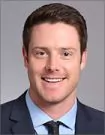Order Granting-In-Part Defendant's Motion to Strike Patent Infringement Contentions, Tech. Licensing Corp. v. Grass Valley USA, Inc., Case No. 3:12-cv-06060-PSG (Magistrate Judge Paul S. Grewal)
The famed architect Helmut Jahn once observed that "[a] good engineer thinks in reverse and asks himself about the stylistic consequences of the components and systems he proposes." These thoughts from one of the United States' most influential architects seem particularly apt given the recent conclusions reached by Magistrate Judge Paul Grewal in Tech. Licensing Corp. v. Grass Valley USA, Inc, regarding what level of specificity is required to satisfy the Northern District of California's Patent Local Rules that govern preliminary infringement contentions.
Magistrate Judge Grewal tackled the question of what "components and systems" actually need to be mapped to establish the elements of infringement under the Northern District's Patent Local Rules, he also weighed in on whether reverse engineering is necessary to establish infringement, and when it is appropriate for the patent owner to argue that claimed functionality is "necessarily" practiced by an accused component.
Patent Local Rule 3-1 requires parties claiming patent infringement to serve a claim chart specifically identifying where each limitation of each asserted claim is found within each accused instrumentality within 14 days of the initial Case Management Conference in a patent case. This rule provides early disclosure of infringement contentions without having to undergo the potentially laborious and protracted process of serving and responding to a series of interrogatories. Claim charts must be sufficiently particular to put the accused infringer on notice of what exactly is being accused on an element by element basis. This may create issues for the plaintiff because it may have limited information about the accused products during the early stages of litigation. For instance, before discovery a plaintiff may have to rely on public information regarding an accused instrumentality, such as product guides and manuals. It may be permissible to rely on product guides and manuals so long as the plaintiff can demonstrate a reasonable chance of proving infringement. Magistrate Judge Grewal's recent Order in Tech. Licensing Corp. illustrates the application of this rule.
In Tech. Licensing Corp., Plaintiff Technology Licensing Corp. ("TLC") filed a patent infringement suit against Grass Valley USA, Inc. ("Grass Valley") asserting that approximately one hundred Grass Valley products infringed four patents for technology involving audio and video signal transmission. TLC then created a claim chart pursuant to Patent L.R. 3-1. Grass Valley found the chart insufficient and moved to strike and compel revised patent infringement contentions. Specifically, Grass Valley argued that (1) TLC included products in its infringement contentions that were not accused of practicing any claim limitation, (2) TLC improperly relied on Grass Valley manuals and catalogs, and (3) TLC's claim charts were too imprecise.
Turning to Grass Valley's first argument, TLC claimed that
Grass Valley's overall systems, which included frames, racks,
power supplies, network interface cards and allegedly infringing
modules, comprised the accused instrumentalities even though the
asserted claim limitations only covered modules.
TLC's charts included all of the ancillary equipment without
alleging how they practiced any claim limitation.
Rather, TLC claimed that the ancillary equipment was "used in
conjunction with one or more accused products" in some
unspecified manner. Magistrate Judge Grewal found that Patent
L.R. 3-1(c) requires patentees to match specific claim limitations
with specific accused instrumentalities. Thus, he found the
inclusion of ancillary products not warranted and struck all
accused instrumentalities not tied to a specific claim
limitation
from TLC's chart.
Turning to Grass Valley's second argument, TLC relied on descriptions and diagrams in Grass Valley's user manuals to identify where and how Grass Valley's products practiced claim limitations. Grass Valley argued that TLC could not rely on manuals because the Northern District requires "reverse engineering or its equivalent." Magistrate Judge Grewal disagreed, finding that the case law cited by Grass Valley specifically held that reverse engineering may not be warranted in all circumstances. He found that at this preliminary stage of litigation TLC only had to disclose information sufficient to allow Grass Valley to appreciate the infringement theory asserted against it. He further found that TLC did not have to prove its infringement case, but rather only needed to demonstrate a reasonable chance of proving infringement. Thus, he found TLC's reliance on manuals not necessarily insufficient.
Turning to Grass Valley's final argument regarding the specificity of the claim charts, Magistrate Judge Grewal found TLC's charts sufficient for one of the patents, but insufficient for another. The sufficient chart pointed to a diagram in one of the manuals showing the paths by which audio and video signals are processed within the allegedly infringing module. Thus, TLC provided sufficient notice of its reasonable basis for asserting infringement of its patent for audio and video signal transmission. However, TLC's reliance on a different manual for the other patent was insufficient because that manual did not disclose certain components or functionalities TLC claimed were being infringed. Rather, TLC argued that based on what was in the manual, the missing claim limitations must necessarily be present. Magistrate Judge Grewal found this bare assertion that a functionality must be present insufficient to describe the "structure(s), act(s), or material(s) in the Accused Instrumentality" performing the claimed function, as required by Patent L.R. 3-1(c). Thus, he ordered TLC to amend its contentions to explain why these limitations are necessarily present, and where they are practiced in the accused instrumentalities.
Magistrate Judge Grewal's recent application of the Patent Local Rules underscores yet another common-sense observation of Helmut Jahn – namely, "[y]ou've got to be prepared in everything you do."
The content of this article is intended to provide a general guide to the subject matter. Specialist advice should be sought about your specific circumstances.


